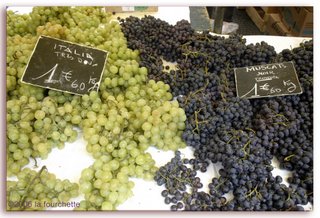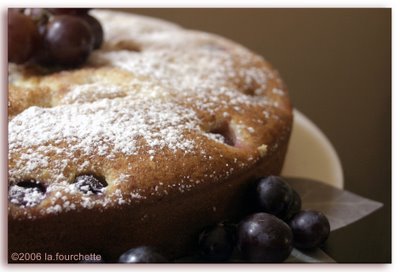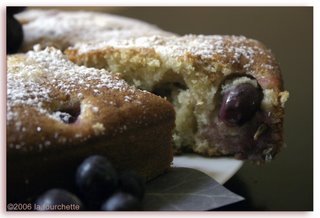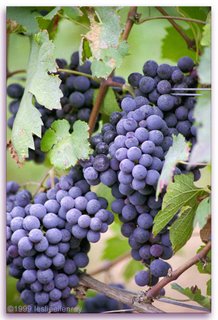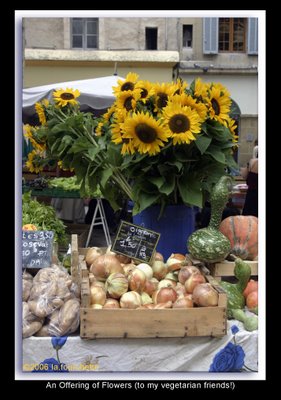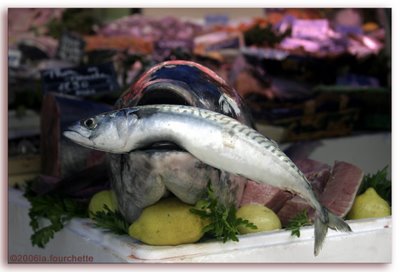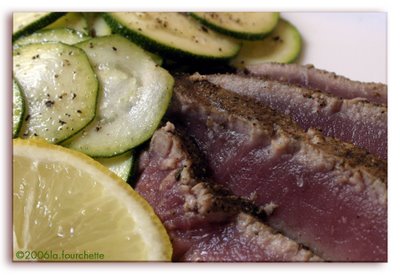For those of you who know me and stop in to keep up to date: the visa/carte de sejour process is finally complete. (This announcement is actually worthy of being given an "all caps" emphasis, but for those who do not know the background, the "screaming through cyberspace" may be misunderstood.) Yes...it only took 11 months and some days (I lost count along the way!) but it is, indeed, finished. I have in my possession my Carte de Sejour...with the worst picture I have ever taken for an official document. The woman taking the picture insisted that if this picture was for an identity card in France, I was not to smile (at least I think that's what she said!) Some of you know the harrowing details of the process on both sides of the ocean through blow-by-blow reports. I can’t relate it any better here than David Lebovitz has done. Another ex-pat (Paris), you’ll find his description quite realistic. It’s good to be able to look back on it with humor – and that he does...exceptionally well.
Along with the completion of my visa process (with multiple trips to Marseille), an opening for an art exposition (my first in France...and well-attended including an appearance by the Cultural Attaché of Aix) of which I was a part with some of my limited edition black and white photographs, and a major step into an intensive course of study for French, there was a wedding. No, no...no surprises you do not know about. It’s a “once-upon-a-time” with a happy ending. Ever wonder what a French wedding is like? Voilá! Take a peek at this one.
Our English Anna met her French Romain in England when Romain was working there for a French company and followed him to France when he returned. They purchased their first home together in the seaside village of La Ciotat. And with this village as a setting, they designed a lovely wedding that was typically French.
Fierce rainstorms the night before the wedding had threatened to put a bit of a damper on the occasion. But by mid-day the skies cleared and the sun shone brilliantly, drying out the damp edges of the morning with a lovely warmth.

The procession began when the bride walked from their apartment to the mairie through the ancient winding streets of the village. (In France, a couple is married in the mairie – City Hall – by city officials. Some choose to participate in an additional religious ceremony in the church, but not necessarily on the same day.) People came out into the street to watch and smiled with approval as the bride passed with attendants and father in tow. Her betrothed awaited her arrival along with the throng of friends and family outside the mairie.

She was accompanied by her proud father into the mairie to join Romain at their seats facing a long table, the kind one might see at school board meetings in the US, raised above the audience on a bit of a dais and spanning the width of the room. In large, square leather chairs, under the sparkling "stars" of recessed lights, the bride, groom and four witnesses sat facing the two officials on the other side of the table and the ceremony began.

There was a lot of French goin’ on and some playful exchanges took place between our couple of the day and the beribboned officials. With a familiar rhythm, the ceremony had them exchanging vows, kisses, rings, more kisses, signatures from the couple and each of the witnesses on official looking documents, another kiss and then "ta daaaahhh!" They were Madame and Monsieur Married Couple - just like that.

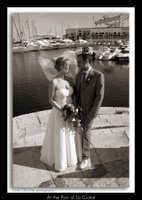
They exited the mairie under a canopy of tossed fresh petals and the entire group followed them over to the water’s edge for pictures with the historical port of La Ciotat as a backdrop.
The procession continued to the reception hall on the other side of the village for the champagne toast on the terrace, attended by everyone who had been at the wedding. As the group began to prepare to enter the hall for the “invitation only” sit down dinner and dance, other guests began to peel off and depart for their own evenings elsewhere. This is a common practice in France. The ceremony is followed by a champagne toast to the bride and groom (complete with hors d’oeuvres and laughter and happy mingling) and when the action of the reception begins it is understood that the dinner is for family and invited guests only. Very civilized, dontcha think?!
As guests wandered into the spacious room with windows looking out over the Mediterranean in every direction, they found their places at the beautifully set tables and the dance music started up. Some eager hoofers hit the dance floor right away, including our bride and groom, who entered between columns of well-wishers and danced their way from the entrance (managing to make a few fancy turns on the floor) before finding their places at the table of honor. The burgundy wines (a gift from the groom’s parents who live in that region) accompanied a lovely six-course meal that was timed to take place over several hours. With dancing between each course, I believe this may be a new secret to weight loss: shake-your-tail-feathers dancing as you eat. I told one of my dance partners that this may be the only wedding at which I’ve actually managed to lose weight!
It was close to 1 am and we were approaching the final ritual to the joyous occasion: The presentation of the pièce montée, or croquembouche, a traditional French wedding cake, and the last formal opportunity to toast the new couple. Just after buckets of perfectly chilled champagne were delivered to each table, the piéce montée made its very dramatic entrance.

This tower of profiteroles, a traditional wedding couple balanced atop, had the the addition of a shooting sparkler attached at the front (looking as if a small rocket had landed into the base of the "cake" before its jets had completed firing). It was carried around the dance floor by two servers, one in front, one in back, as if they were transporting royalty on a sedan chair. The lights in the room had been darkened for full effect and it landed on a long table draped with white linen on the dance floor for the couple to slice into before plates of the delicious sweets were served to the rest of the happy well-wishers.
I was one of the first to leave the celebration and that was close to 2 in the morning! Do the French know how to party or what?!?
After a full day of ritual and celebration, our newly wedded couple, champagne bottle in hand, walked back through their village in the hours just before dawn to toast a new sunrise...and I’m guessing settle into the idea of ‘Happily Ever After…’. Wishing you much love and happiness, Anna and Romain…and many more reasons to have rockin’ parties like that!

* Croquembouche comes from the French words “croquant” meaning crunchy and “bouche” for mouth. Often the dessert at French weddings, baptisms or christenings, the croquembouche has its origins on the medieval tables of the French Royalty and Nobility.
Join me next week as I'm headed back into the kitchen in the days ahead. Enough already with the yogurt-on-the-run mode...this girl needs food!
L

